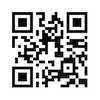RNA Reflections: How the Internet Transforms Faith
The following is a statement presented by Heidi Campbell, NMRDC director, at the Religious Newswriters Association 2013 conference on September 28th for a panel on Digital Faith and Ministries use of Social Media (see: http://www.rna.org/?page=ConfProgram2013). Below is her brief response to the opening question: "How is the Internet transforming faith?"
A key underlying observation which has informed my research into religion in digital culture over the past decade is this, studying religion online highlights larger societal shift in how religion is conceived on and lived out both offline and online. Through my work that has investigated a variety of phenomena --from religious blogging and the practices of religious digital creative to the rise of the Jewish kosher cellphone and Islamogaming-- I have seen a noticeable trend towards what Religious Studies scholars call “Lived Religion”. Lived Religion is a framing that sees religion as dynamic, experiential and rooted in the everyday life of its practioners. While traditional and organized religion is typically tied to a particular spiritual worldview where core belief dictate religious practice, lived religion notes that individuals and communities live out their faith in ways that may differ from official religious dogmas or traditions. This trend is echoed in many of the recent research studies of the Pew foundation which point to trends of “spiritual, but not religious or “faith without affiliation” and that religious belief is often assembled by adherents from a variety sources rather than a singular tradition.
I have found that digital culture often exemplifies lived religion, as language and images of the sacred becomes tools online to be played with, modified, and reassembled as people use social media to create personalized understandings or expression of the religious. This trend matches what media scholar Henry Jenkins describes as the move towards “participatory culture” within new media. He argues that the power of digital culture lies in its offering people new opportunities to engage in interaction, co-creation and collaborative authorship. For example YouTubers or Meme creators are able to draw images, texts and ideas from multiple sources to create new texts that remix original meanings, and so are freed from authorial intention and agenda. New media enables users to produce and consume media and information simultaneously. The Internet becomes a space where people can express their individual passions as well as find their tribe of those who share their collective identity.
So new media encourages interactive play with religious ideas, the broadcasting one’s convictions, and creating new spaces to carve out and express alternative religious identities online. This changes and challenges established relationships and structures, within many religious communities. Digital media has given rise to new breeds of armchair theologians, spiritual innovators and religious thought leaders through their experimentation with online communication. We see this in how many people now create visual devotionals in Instagram, Tweeting their faith claims, make public their spiritual mashups on Pintrest and use Facebook to perform and brand their religious identities.
In 2012 article I published in the Journal of the American Academy of Religion*, I summarize these tendencies by describing what I argue is a move towards “networked religion”. This is where people experience and live out religion online in ways that are shaped and informed by the structures and affordance of network culture. Networked religion is defined by 5 core traits. Networked community which suggests communities function as loose social networks with varying levels of religious affiliation and commitment. Storied identity which sees the religious self as malleable rather than fixed, so individual online seek to create a unified self through constructing and connecting themselves to distinctive narrative. Shifting authority that notes there is a shift occurring between traditional religious leaders and power structures due to the rise of new gatekeepers and religious authority roles online. Convergent practice that highlights how digital space encourages the blending of religious practices and information from multiple sources in ways that build a self-directed form of spiritual engagement. And Multi-site reality which highlights how the online world is consciously and unconsciously imprinted by users’ offline values, so there is a flow and connection between online and offline ways of being.
These traits exemplify key trends within religious practice and culture online. Yet I argue these are trends are also seen in religious practice offline as well. This means careful study of religion online reveal dominant popular conceptions and framings of religion. So in summary, our digital networked reality encourages us to live in flexible religious affiliations, moderated by individual preferences and to seek out experiential connections, over connecting to bounded communities established and maintained through traditional hierarchies. This has encouraged many of the religious innovations we see online, which this panel seeks to discuss in more detail today.
*Campbell, H. (2012). Understanding the relationship between religious practice online and offline in a networked society. Journal of the American Academy of Religion. 80(1), 64-93. URL: http://jaar.oxfordjournals.org/content/80/1/64.abstract





